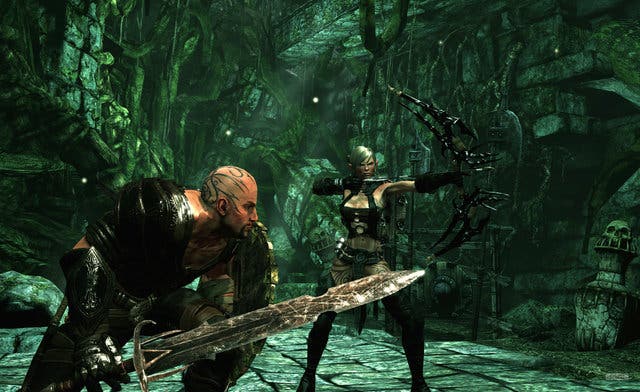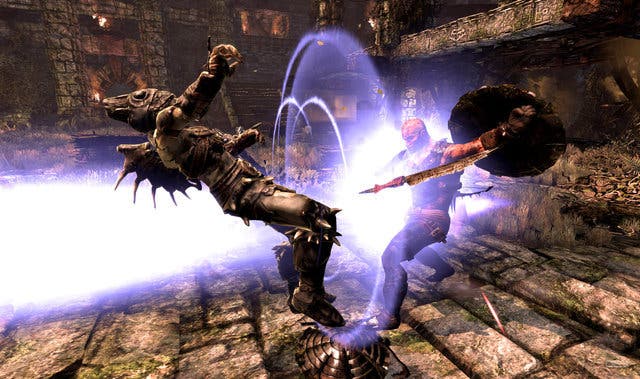Hunted: The Demon's Forge
Gears of Warcraft.
It's not the end of the world! Not in Hunted: The Demon's Forge, anyway, which marks this game out as rather unusual. If there's a common theme among Bethesda Softworks titles it's apocalyptic events causing people to squabble over whatever's left. Whether it's Fallout: New Vegas (nukes), Rage (asteroid) or Brink (flood), it is the end of the world, and you have an interesting, usually rather violent role to play during the death throes.
Hunted doesn't have the same premise or profile as its popular cousins elsewhere in the Bethesda ranks. However, it's easy to see why this game shares the same publishing label: it's got the veteran development team raised by tabletop role-playing, it has the novel mechanics and a dark sense of humour, and it's also modest.
Bethesda videogames seem to like being videogames, and leave the fine-art rants to everyone else. Hunted, with its talking stone doors, burly one-liners and screeching demons, is very much in that vein.
Then again, given that the game begins with demons dragging the villagers of Dyfed underground while 200-foot ogres stalk across red skies of permanent twilight, characters communing with the souls of fallen citizens and angels doling out mission incentives, it probably is the end of the world after all.

At least you're facing it in good company. Hunted is a modern-day co-operative action game inspired by the classic dungeon crawlers of the eighties and nineties. "Gears of Warcraft," jokes inXile president Matt Findley, echoing internet banter since the game's announcement.
It sees mercenaries Caddoc (think Jason Statham with a sword) and Elara (a haughty female Legolas with virtually no clothes on) descending on the town of Dyfed at the behest of a shifty-looking apparition called Seraphine. Turns out the place is abandoned and at the mercy of demons, one of whom is seen ripping the heart out of the last surviving townsman. Caddoc and Elara chase the demon underground and off we go.
Each character has distinctive strengths and weaknesses. Caddoc is fierce in close quarters, with light and heavy sword attacks and a shield-charge. Elara is inch-perfect with her slightly aim-assisted bow, popping in and out of cover and dispatching anyone Caddoc isn't dealing with.

The need to co-operate, though, immediately goes beyond simple strength of numbers and revival duties, although they obviously exist as a baseline (a regen vial allows either party to resurrect a comrade from across the room, so no Gears of War-style revival chores). Each character can "battle charge" the other to buff them but if they charge each other then they form a sort of electrical tether, making short work of anyone swept up by it.
Co-op is also drawn out by specific enemies and level design. Berserkers won't stay down under Caddoc's blows alone, while others have shields that deflect his blows and need Elara's arrows to break their guard.
Rather like the first Gears of War the action seems to move between narrow rat-runs that let you gather your wits, explore a bit and chill out, and open, set-piece battle arenas. These are often strewn with natural cover, balconies and other vantage points that suit each character in different ways. It's all part of what game director Maxx Kaufman calls "this dance of their co-op differences".








